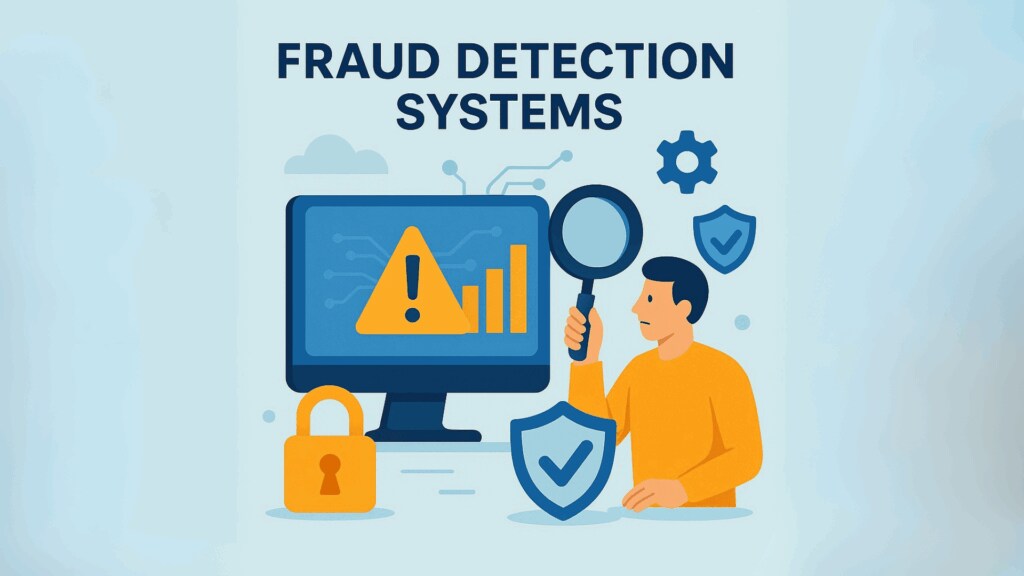
Table of contents
What Is a Fraud Detection System?
A fraud detection system is a blend of software, machine learning, and real-time analytics built to identify suspicious or unauthorized activity — especially in financial systems, ecommerce platforms, and other high-risk environments. Think of it as a digital immune system, always on alert for signs of fraud like abnormal transactions, unfamiliar login behaviors, or coordinated bot activity.
The core mission of these systems is proactive prevention. Rather than responding after fraud has occurred, detection systems continuously monitor for warning signs and intervene early. The result? Mitigated financial loss, stronger customer trust, and fewer security breaches.
Why Is Fraud Detection Important?
Fraud isn’t just a minor inconvenience. It’s a multi-billion-dollar global threat that affects businesses of every size and industry. A successful attack can lead to stolen funds, compromised user data, and severe reputational damage. Worse yet, regulatory fines can pile on if proper fraud prevention measures aren’t in place.
A robust fraud detection system not only protects revenue but also sends a clear signal to users: this is a safe place to do business. Customers are more likely to return to a platform that treats their data and security with the seriousness it deserves.
Moreover, in a regulated environment, businesses must comply with financial, privacy, and anti-money laundering (AML) laws. A well-implemented fraud detection solution is no longer optional — it’s a regulatory necessity.
Types of Online Fraud
Today’s fraudsters are savvy and adaptable. Common fraud types include:
- Credit card fraud where stolen card data is used to make unauthorized purchases;
- Account takeovers, often fueled by phishing or credential stuffing;
- Identity theft involving fake documents or stolen credentials to open accounts;
- Bonus abuse, where fake or duplicate accounts exploit referral or reward programs;
- Fake account creation, a tactic frequently used in bot-driven attacks.
This last point ties in closely with CAPTCHA technology. At captcha.eu, we specialize in protecting websites from automated account creation—one of the most common precursors to fraud. By integrating CAPTCHA at account signup or login, businesses can prevent bad actors from flooding their systems with fake users, helping to cut fraud at the root.
How Do Fraud Detection Systems Work?
Fraud detection systems operate across several layers. They begin by aggregating data from various sources—transaction logs, user profiles, IP addresses, device information, and behavioral patterns. From there, advanced algorithms and AI models analyze the data to detect anything abnormal.
Each transaction or event is scored based on risk. A low-risk login from a known device might pass through seamlessly, while a high-risk login from an unknown IP range might trigger additional verification or a manual review.
In real-time, these systems can:
- Identify anomalies like high-frequency purchases or logins from unfamiliar geographies;
- Cross-check behavioral patterns against historical user data;
- Flag coordinated activities that might indicate bot attacks or fraud rings.
Once a potential issue is detected, the system raises alerts for investigation or triggers authentication workflows—sometimes prompting additional user verification or even invoking CAPTCHA challenges to verify human interaction.
Key Technologies Behind Effective Fraud Detection
Modern fraud detection solutions are powered by an ecosystem of complementary technologies:
- Machine learning models that continuously evolve based on new fraud trends.
- Behavioral analytics that assess how users interact with platforms over time.
- Device fingerprinting that identifies unique patterns associated with individual user devices.
- Geolocation tracking to flag activities from unexpected regions.
- Network analysis for detecting collusion or suspicious user clusters.
While these tools form the backbone of detection systems, they’re most effective when layered with preventative security measures. CAPTCHA is a prime example — it helps prevent the automated abuse that often acts as a gateway to larger-scale fraud.
At captcha.eu, we provide a GDPR-compliant, user-friendly CAPTCHA solution that helps companies block bots and automated threats before they escalate into fraudulent transactions.
Challenges and Opportunities
Despite significant advances, fraud prevention is an ever-evolving battle. Cybercriminals are relentless, continually innovating ways to bypass existing safeguards. Real-time detection must balance speed with accuracy — a false positive might prevent fraud, but it could also frustrate a legitimate user.
Other key challenges include:
- Data overload: Managing and analyzing large datasets in real time requires serious computing power.
- Cross-border complexity: Fraud detection must account for different regulations and transaction patterns across regions.
- Privacy compliance: Ensuring user data is analyzed ethically and within legal boundaries is more important than ever.
Fortunately, the rise of AI-powered detection and collaborative data sharing between industries is helping to close the gap. And when combined with smart entry-point defenses like CAPTCHA, businesses can strike the right balance between security and user experience.
Choosing the Right System
When selecting a fraud detection system, consider:
- Your industry-specific risks (e.g., ecommerce, banking, SaaS).
- The volume and sensitivity of your transactions.
- Regulatory obligations, such as GDPR, PCI DSS, or PSD2.
- System scalability, especially if you’re growing quickly or operating internationally.
- The user experience — fraud checks should be seamless for real customers, not roadblocks.
Integration also matters. A solution like captcha.eu can be easily implemented alongside fraud detection software to reduce bot-based risks before they reach deeper system layers.
CAPTCHA: Your First Line of Defense
Fraud detection systems typically operate after a user is already in your system. CAPTCHA, on the other hand, works before fraud even starts. By keeping bots out during registration, login, and form interactions, CAPTCHA helps prevent:
- Mass fake account creation;
- Credential stuffing attacks;
- Automated abuse of promotional offers.
That’s why many companies use both. CAPTCHA blocks bots at the surface, and fraud detection systems dive deep to catch human-led fraud. The combination creates a robust, end-to-end security posture.
At captcha.eu, we provide enterprise-ready CAPTCHA tools that are privacy-first, accessible, and adaptable to various use cases—from ecommerce to fintech and beyond.
Conclusion
In today’s digital-first economy, a robust fraud detection strategy is a non-negotiable necessity. The threats are complex and constantly shifting, but so are the tools available to fight them. By combining smart fraud detection with preventative tools like CAPTCHA, businesses can secure their platforms, protect their users, and build trust at every digital touchpoint.
Whether you’re a startup, a global enterprise, or something in between — staying one step ahead of fraud means choosing the right partners, the right tools, and the right strategy. At captcha.eu, we’re proud to play a role in that layered defense, offering an elegant solution to a complex problem.
100 free requests
You have the opportunity to test and try our product with 100 free requests.
If you have any questions
Contact us
Our support team is available to assist you.




